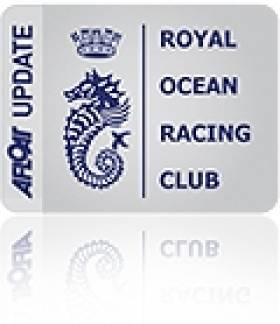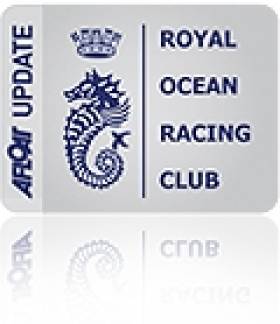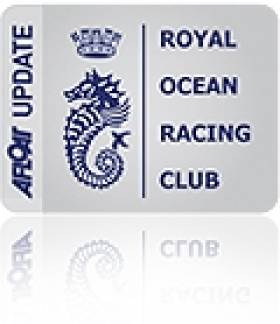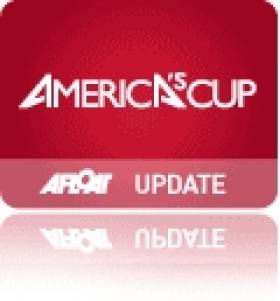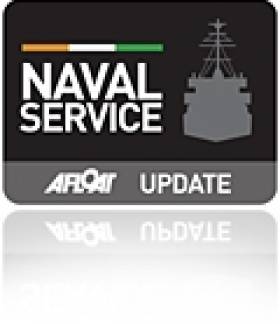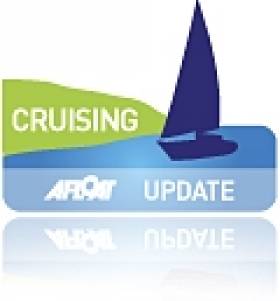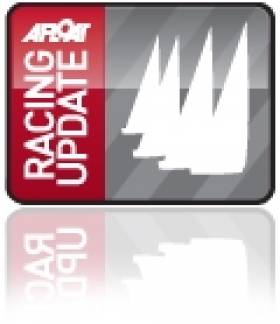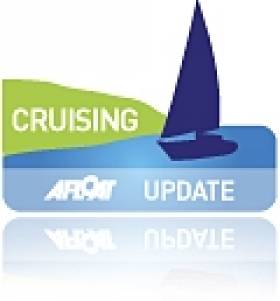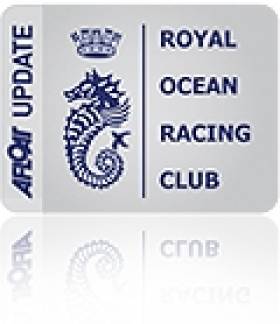Displaying items by tag: Caribbean
RORC Caribbean 600 Multihull Record Broken By Phaedo
#rorc – Lloyd Thornburg's MOD 70, Phaedo3 crossed the RORC Caribbean 600 finish line in Antigua at 20:35:30 AST yesterday in an elapsed time of 1 day, 9 hours, 35 minutes and 30 seconds. Phaedo 3 has broken the multihull race record set by Claude Thelier and John Burnie's ORMA 60, Region Guadeloupe by 6 hours, 35 minutes and 35 seconds.
RORC Caribbean 600 Start Aerials
#rorc – Video highlights from Day One of the RORC Caribbean 600, with incredible aerial footage of the high performance yachts in spectacular ocean racing conditions.
Global Fleet Gather for RORC Caribbean Rendezvous
#rorc – An amazing fleet of yachts from around the globe, have come together for a spectacular Caribbean rendezvous and there are some key Irish crew involved writes Louay Habib. Fort Charlotte, Antigua will be the starting and finishing point for a sensational 600-mile yacht race around 11 Caribbean islands.
From Ireland, the Royal Irish Yacht Club's Tim Goodbody (junior) will be racing on Windfall. James Carroll (ex–boat captain of Green Dragon) will be captain on the Carkeek 47 Black Pearl. Simon Johnson is racing on Leopard 3.
James Carroll has been with the Carkeek 47, Black Pearl, since launch June last year. It's a ful spec offshore boat that rreviously competed in the Palermo to Monte Carlo Race and Middle Sea Race last year. It has a full offshore programme again this year, starting with this week's Carribbean 600. Carroll is both boat captain and pitman.
Two other Irish sailing in the Caribbean 600 are Paul O'Donoghue from Lough Derg Yacht Club, son of Geoff O'Donoghue and Gordon Spain from West Cork. They are both on GB entry LIARA, owned by Tony Todd.
Since 2009, the RORC Caribbean 600 has been growing in popularity and the seventh edition boasts an astounding fleet of yachts: record breaking high performance racers, magnificent schooners, elegant classics and fast production yachts. World class sailors will be taking part, rubbing shoulders with royalty, captains of industry and passionate Corinthian amateurs. (Latest entry list 64 boats)
The course meanders through the stunning central Caribbean affording amazing scenery, but the RORC Caribbean 600 is not just a joyride. Competitors can expect little sleep as the myriad of corners create many manoeuvres. The racing is electric but the high speed action in tropical heat can be exhausting. At the finish, the welcome party for the crews has become legendary. Every boat is cheered in, regardless of the hour, for a cold beer and a warm welcome. (Follow the fleet. The race tracker will be live before the start here.
The monohull course record for the RORC Caribbean 600 (40 hours 20 mins 02 secs) was set by George David's Rambler 100 in 2011. The quality and depth of the fleet in this year's race means that the quest for line honours will be the most dramatic in years.
The overall winner is decided by the RORC IRC rating system and the calibre of the fleet is such that this year's winner is almost impossible to predict. Teamwork, tactics, and a share of good luck will decide the winner. Over the past six editions, only one 100-footer has won the race overall: Rambler 100. High performance yachts ranging from 50-72 feet have won the RORC Caribbean 600 Trophy on four occasions.
This year three projects, new to the race, will fit into that category: Bryon Ehrhart from Chicago, Illinois, will be racing Reichel Pugh 63, Lucky. Piet Vroon's newly acquired Ker 51, Tonnerre 4, from Breskens, Netherlands and British TP52 Sorcha, sailed by Peter Harrison, make up a trio of yachts that will be amongst the favourites for overall victory under the IRC rating rule.
The seventh edition of the RORC Caribbean 600 has entries from over 14 different nations and crew from many more. Throughout the fleet there is a myriad of class champions from famous yacht races around the world.
UNITED STATES OF AMERICA
George David's brand new hi-tech 88ft Rambler is now in Antigua, hoping to lower the bar for the course record for the RORC Caribbean 600. Previous Ramblers still hold course records for: RORC Caribbean 600, The Transatlantic Race, Newport to Bermuda Race and Rolex Middle Sea Race. Amongst Rambler's international crew are numerous world champions including three well-known sailors from New Zealand: Multiple America's Cup winner, Brad Butterworth and Volvo Ocean Race winners, Stu Bannatyne and Brad Jackson.
Yachts from the USA have won the RORC Caribbean 600 overall on three occasions, more than any other nation. From Boston, Massachusetts, Ron O'Hanley's Cookson 50, Privateer, was the overall winner under IRC in 2013 and the American team is back for their fifth race, having won IRC Canting Keel last year. From Minneapolis, Minnesota, Hap Fauth will be racing his world championship winning Maxi 72, Bella Mente, the overall runner up for the race on two occasions. This year Bella Mente's crew includes Mike Sanderson, Terry Hutchinson, Ian Moore and Adrian Stead. Bella Mente will be hoping it will be third time lucky in their quest for first place.
Two American flyers will be making their RORC Caribbean 600 debuts: Doug Baker from Orange County, California will be racing Kernan 47, True, and from Houston, Texas William Coates' Ker 43, Otra Vez will have Volvo Ocean Race sailors George Peet and Luke Molloy on board. Stefan Jentzsch's German Carkeek 47, Black Pearl, also makes its debut, with South African America's Cup navigator, Marc Lagesse, amongst the crew.
Three American classic yachts will be on the start line on February 23rd: James Grundy of Oxford, Maryland will be racing the 84 year-old Alden schooner, Summerwind. The 1938 S&S Yawl Black Watch will sailed by Joseph Robillard of Short Hills, New Jersey and Frank Eberhart from Vinalhaven, Maine will be racing for the third time with the 1970 classic, Hound.
ITALY
Volvo 70 Maserati is skippered by the legendary Italian sailor from Milan, Giovanni Soldini. Maserati is designed to break records and holds the Cadiz-San Salvador, New York-San Francisco and the Cape Town-Rio de Janeiro race[BB2] records. On board for the RORC Caribbean 600 will be Pierre Casiraghi, eldest son of Princess Caroline of Monaco, fourth-in-line to the Monegasque throne and a passionate sailor. Maserati's owner John Elkann will also be racing. The Grandson and heir of Giovanni Agnelli, John Elkann is the President of Fiat Chrysler Automobiles which owns the Maserati brand, as well as Ferrari, Alfa Romeo and many others.
GREAT BRITAIN
London based property developer Mike Slade's Canting Keel Maxi, Leopard, set the course record in the inaugural race and holds numerous speed and race records, including two current Transatlantic races. This year, Leopard has been chartered by UK-based businessman Chris Bake, winner of five RC44 Tour Championships. The core Leopard crew, including Australian skipper Chris Sherlock, will form a formidable partnership with Bake's Team Aqua. The all-star crew includes America's Cup winner Cameron Appleton from New Zealand and Volvo Ocean Race winner Jules Salter from Gurnard, Isle of Wight.
RORC Admiral and London surgeon, Andrew McIrvine will be taking part in his sixth race and skippers Southern Wind 94, Windfall. The vast majority of Windfall crew will be RORC members, including Dublin based RORC Commodore, Michael Boyd as navigator. Two RORC Rear Commodores will also be on board: Justin Slawson from Wimborne, Dorset and Adrian Lower from Burnham-on-Crouch, Essex. Windfall should have a fascinating battle with PY100, Liara, owned by Tony Todd from St. Peter Port, Guernsey and sailed by John Walker from Romsey, Hampshire. Liara's crew include a number of Hampshire's most experienced yachtsmen including Peter Morton and Kelvin Rawlings from Cowes, Isle of Wight and navigator, Nat Ives from Hamble-le-Rice, Hampshire.
British Volvo 70 Monster Project will be skippered by Andy Budgen from Greenock, Scotland. Monster Project took Line Honours for the Canting Keel Class last year and is a real flyer in Caribbean conditions. Monster Project is one of 10 specialist race charter yachts competing. Well over 100 passionate amateur sailors will be taking up the challenge against the professionals, racing on performance charter yachts.
Last year First 40 Lancelot II, skippered by Chris Jackson from Fareham, Hampshire, was the winner of IRC Two which contains the bounty of race charter yachts. Ross Applebey from Wallingford, Oxfordshire will skipper Oyster 48 Scarlet Oyster, which has won class in the RORC Caribbean 600 on two occasions. Racing for the sixth time, Andy Middleton from Cowes, Isle of Wight will skipper First 47.7 EH01.
Antigua is the Caribbean home of two of the world's most famous schooners. Athos and Adela will continue their gentlemen's duel in the Spirit of Tradition class. The Dykstra-designed Adela is the smaller of the two magnificent yachts at 182ft and over 200 tons. The sails and systems on board Adela are advanced, but manoeuvres such as handling her giant red 1000m2 masthead spinnaker can require up to 30 crew. Athos is the largest yacht competing this year's RORC Caribbean 600. The 203ft Hoek design weighs 370 tons, her rig is over 200ft high and she can hoist over 3000m2 of sail. Adela has won the Spirit of Tradition and Superyacht Classes for the last three years, but Athos provided exhilarating competition last year, finishing less than 39 minutes behind after two and a half days at sea.
By sharp contrast with the two largest yachts racing, local dentist Bernie Evan-Wong will be racing one of the smallest, his new Reichel Pugh 37 Taz. Bernie has competed in every RORC Caribbean 600 race since it started in 2009. "The RORC Caribbean 600 race captured my imagination the first time I heard about it," exclaimed Bernie Evan-Wong. "The thought of full-on racing, night and day in tropical waters for 600 miles was a challenge and an adventure I just could not resist! If you love sailing and are a serious sailor, you have to put the RORC Caribbean 600 on your itinerary."
Sir Ben Ainslie Avoids Disaster As Yacht Comes A Cropper In Caribbean
#SirBenAinslie - America's Cup team head Sir Ben Ainslie had a bit of a slip-up during his Caribbean honeymoon recently when his yacht broke down near Richard Branson's private island.
As Yachting & Boat World reports, the Olympic sailor and America's Cup hero had to be rescued by Branson's watersports team after a malfunction of the mainsail on his yacht Rita - putting it on a deadly course with a jagged reef.
But the team's quick action avoided disaster and Sir Ben was able to enjoy the rest of his island getaway with new wife, TV presenter Georgie Thompson.
Once the honeymoon is over, though, Sir Ben will be hard at work preparing for the next America's Cup in 2017 with his namesake team BAR – which recently announced a long-term partnership with renewable energy asset management firm Low Carbon Investment.
Caribbean Drug Yacht Seized By Irish Navy & Taken To Cork Harbour
#drugsmuggling – An 18–metre yacht (60–foot) carrying an estimated street value of between €70m and €80m of Cocaine seized off the South West coast has arrived in to Cork Harbour after arrest by the Irish Navy last night.
Three men believed to be from the UK were detained on board the yacht, a Naval Cantiere 62 type, called the Makayabella.
The yacht was 200 miles off Mizen Head when the seizure was made. It was boarded by Navy drug interdiction personnel under cover of darkness in on Tuesday morning.
The shipment is understood to have originated in South America, while the yacht set sail from the Caribbean,
Six years ago, another 60–foot yacht on a transatlantic passge fom the Caribbean was also intercepted on the southwest coast by Gardaí, the Naval Service and Customs. A consignment of at least 1.5 tonnes of cocaine found on onboard was seized.The crew of that yacht were arrested and taken into custody by the LE Roisin at Castletownbere harbour. That haul matched the 2007 record €440m seizure at Dunlough Bay in west Cork.
The latest seizure was from on a vessel that was taken into custody around 200 miles off the southwest coast last night.
A full garda technical examination of the Makayabella will get under way this morning.
The seizure of around a tonne of cocaine is believed to be one of the biggest drugs seizures at sea in Europe this year.
Details of the operation were kept secret to facilitate follow-up investigations, both in Ireland and abroad.
The vessel is believed to be in poor condition following its transatlantic crossing.
{youtube}Ap9xp5W_QFY{/youtube}
According to RTE News, the Maritime Analysis and Operations Centre for Narcotics, based in Lisbon in Portugal, is also understood to have been involved in the operation, along with Britain's National Crime Agency, as well as security and customs agencies elsewhere.
Caribbean Christmas Rally Cruisers Expected in Antigua on December 29
#christmasrally – Strong winds but a relatively smooth sea state provided a fast exciting start to the Christmas Caribbean Rally.
The fastest boats in the rally, which set out from Lanzarote on December 16th, have about 1200 nm to go to Antigua. The fleet is being lead by Spanish flagged Ocean Phoenix, a Rob Humpreys 77, with Eduard Numan's Dutch Shipman 63, Jinthe close behind.
Eduard is a sports fanatic taking part in hockey, ski-ing, golf and cycling in his home town of Amsterdam. It has been Edu's ambition to sail across the Atlantic and cruising through Patagonia is also high on the agenda for Jinthe. Before the start of the Christmas Caribbean Rally, Jinthe built up a friendly rivalry with Juan Luis Serra, skipper on Ocean Phoenix. For the moment, Ocean Phoenix has the upper hand and Ocean Phoenix also has a secret weapon, First Mate 'Duna'. Apparently the 8 year old poodle is handy around the boat and is as wily as an old fox when it comes to the navigation!
Husband and wife, Alan and Terry Ryall are sailing two up on an Island Packet 465, Seminole Wind. The British couple have sailed two-handed before but never across an ocean. Terry has been providing regular blogs since the start of the Christmas Caribbean Rally. From these extracts you can surmise they are clearly enjoying the fast sailing and near perfect tradewind conditions. Below is an extract:
"This was a notion that turned into a dream that worked into plan that got delayed and is now happening - two very lucky people at the start of a new chapter in a blessed life."
"On the upside too, there's the vastness of the ocean and the depth of the universe We've had a bright full moon for most of the week. At one point when coming up for the midnight watch I thought someone was shining a spotlight into the cockpit. It was so, so bright. When the stars come out they're magnificent as is the Star Walk app that you just point at the sky and it tells you what the stars are. It's brilliant. Incidentally, I've now reached level 106 on Candy Crush Saga!"
Prior to departure, all of the yachts competing in the Caribbean Christmas Rally received Christmas sacks with presents, decorations and even a miniature Christmas Tree all provided as part of the package by the Sailing Rallies team.
The first boats are likely to make landfall in Antigua around the 29th December.
New Format Event Set to Kick-Start Caribbean Race Season
#Caribbean – A healthy line-up of entries is expected at the inaugural Mount Gay Round Barbados Race Series that runs from 15-24 January 2014.
With its warm Caribbean waters, miles of gold sandy beaches, and constant 12-18 knot east to east-north-east trade winds, there couldn't be a more perfect location than Barbados to kick-start the Caribbean racing season.
Organised by the Barbados Cruising Club in association with the Barbados Tourism Authority and Mount Gay, the Mount Gay Round Barbados Race Series encompasses the already established Mount Gay Round Barbados Race plus a new series of coastal races, and a final 300-mile sprint to Antigua starting on 25 January.
With over 50 yachts expected to take part from a classic 32m three-masted brigantine to a selection of smaller classes including a fleet of J/24s, this event promises some serious competition.
Those signed up already include Idea – Reichel Pugh 78 – owned by John Wilson, UK, which holds the outright monohull record 70 miles clockwise round Barbados, with a time of 5 hours, 3 minutes, 34 seconds. Silver Bullet – Supercat 30 – owned by Bryn Palmer, Barbados, plans to defend the multihull title (4 hours, 24 minutes, 27 seconds). Palmer, commenting on the round Barbados course for multihulls, said: "It is an ideal, straight line course for multihulls with potentially only one tack and one gybe, so we are looking forward to giving it our best shot again in January."
Wilson from the UK, commenting on the new series format said: "I have been racing in Barbados since 1996 and am very proud to be returning as the owner of Idea to try to defend our monohull record. As a team we are also delighted that this January Regatta now includes some inshore fleet racing, which I am sure will attract more and more boats to Barbados year on year. It is a credit to the various yacht racing stakeholders in Barbados that this format has been agreed, ensuring a significant benefit to the Caribbean Racing Calendar."
Other interesting entries include Matt Baker's stunning Alfred Mylne-designed The Blue Peter that is currently en-route to Barbados, a 32m working Brigantine – Tres Hombres – from Holland, and Monster Project – a VO70 from the UK.
As expected at the home of Mount Gay Rum, fine Caribbean hospitality will be in full flow throughout the week with a party every night including the legendary Mount Gay Rum Red Cap party. The organisers have also teamed up with the Barbados Polo Club to run an exhibition match during lay day (20 January).
Peter Gilkes – Consultant to the Barbados Tourism Authority for Yachting Development – commenting on the 2014 event said: "Having had the pleasure to serve as a Senator of Barbados from 2008 to 2013 my main focus was to make Barbados a yachting event-friendly location. We tested the waters, so to speak, by successfully hosting the IOM Barbados Worlds in 2009, the Fireball Barbados Worlds in 2010, then HRH Prince Edward's Royalist Regatta in 2011. In 2013 we hosted our biggest event to date – the 505 SAP Barbados Worlds.
"We are proud of our strong reputation of running world class events and we look forward to welcoming competitors to the exciting new format Mount Gay Rum Round Barbados Race Series in January."
Christmas Caribbean Rally Calls For Irish Entries
#Caribbean - The Christmas Caribbean Rally is offering £100 (€116) off the entry fee for the first Irish yacht to sign up for this year's event.
According to organisers Sailing Rallies, entries from England, the Netherlands, Spain and as far afield as Australia have already signed up for the next Caribbean cruising event, which departs from Lanzarote headed for Antigua on 16 December.
Taking place over the Christmas holiday period at a time when the trade winds should be fully established and the risk of hurricanes is at its lowest, the rally is intended to be a flexible, relaxing and enjoyable affair for skippers and crews alike.
Entry sizes are equally flexible, with the smallest entrant so far at 21 feet (6.5m) ranging up to 63ft (19.5m).
For those who prefer a more competitive event, organisers are working in conjunction with the Royal Southampton Yacht Club to run a full IRC racing division for the rally.
More information on the Christmas Caribbean Rally is available from the Sailing Rallies website HERE.
O'Hanley Wins Caribbean 600
#caribbean600 – Ron O'Hanley's Cookson 50 Privateer has clinched the overall IRC win in the RORC Caribbean 600 after a wellnigh perfect race which saw the Newport, Rhode Island boat and crew sweep into the finish at Antigua to topple the much-fancied JV 72 Belle Mente (Hap Fauth) from the winning slot by just over 22 minutes on corrected time writes W M Nixon.
In one of the toughest Caribbean 600s yet sailed, this is the second time a Cookson 50 has won overall – the inaugural race in 2009 had Privateer's Irish sister-ship Lee Overlay Partners (Adrian Lee) taking the title. The continuing list of successes confirms the Farr-designed canting keel boats built by Mike Cookson of New Zealand as a modern classic – Adrian Lee's boat, then known as Ger O'Rourke's Chieftain, was overall winner of the 2007 Fastnet, and the marque has had many other successes since it first hit the water in 2004.
The Irish contingent has had mixed fortunes in this year's race, but two of the bigger boats – the hundred foot Cape Arrow (IRL 1416) owned by Tuskar Shipping, and the Briand 76 Lilla (IRL 7600) owned by Kinsale YC members Simon and Nancy de Pietro, are finished and well placed, with Cape Arrow at 12th overall while Lilla is better again, 8th overall and currently lying first in IRC 1. We'll have a full report and analysis in the Sailing on Saturday blog.
Irish Yachtsmen Rescued From Stricken Vessel Off Bermuda
#Wolfhound - Four Irish yachtsmen have been rescued from a recently purchased vessel some 70–miles north of Bermuda after it suffered both power and engine failures amid stormy conditions off the northeastern United States.
The 48-foot Swan class sloop Wolfhound, purchased recently by owner/skipper Dalkeyman Alan McGettigan, had departed from Connecticut on 2 February en route to Antigua in the West Indies to compete in the RORC Caribbean 600.
As WM Nixon wrote on Afloat.ie recently, the Wolfhound was expected to eventually call Dun Laoghaire home following its Caribbean adventure.
But according to Bermuda's Bernews website, trouble began when the vessel reportedly suffered a loss of battery power due to the failure of a new inverter charger some 400 miles off the Delaware coast.
This was followed by engine failure a day after departure which left the vessel without communications or navigation systems for eight days.
Between Friday and Saturday the boat reportedly suffered two knockdowns in treacherous weather on the heels of the midwinter storm that recently battered America's northeastern states, and which led McGettigan to activate the on-board emergency beacon.
After a fruitless search by US Coast Guard aircraft, the yachtsmen were eventually located by and transferred to a passing cargo ship, Tetien Trader, which had joined the search effort.
The Wolfhound later sank some 64 miles north of Bermuda.
McGettigan's crew from the Royal Irish Yacht Club in Dun Laoghaire have been confirmed by the club's sailing manager Mark McGibney as Declan Hayes and Morgan Crowe.
Tom Mulligan of the National Yacht Club has been named locally as the fourth crew man on board.
A source close to Afloat.ie says that Hayes telephoned home from the Tetien Trader and confirmed he and the others were being "well looked after" by the Greek crew of the cargo vessel, which is due to land in Gibraltar on 19 February.
A member of the RIYC, Alan McGettigan is an experienced offshore skipper, previously sailing in areas as far afield as the Baltic Sea, the Caribbean, the South China Sea and the Mediterranean, and having competed in past Round Ireland and Dun Laoghaire to Dingle (D2D) races, most recently in the yacht Pride of Dalkey Fuji.


























